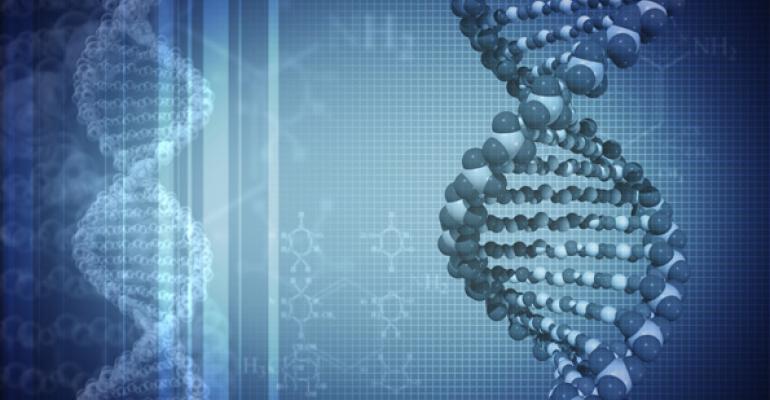“Developing reproductive technology has outpaced federal and state laws, which currently do not address directly the legal issues created by posthumous conception.”1 “Although biological paternity can now be scientifically proven to a near certain degree of probability, modern artificial reproduction technologies currently allow for variations in the creation of child-parent relationships which are not solely dependent upon biology. The use of donor eggs, artificial insemination, and surrogate wombs could result in at least five potential parents.”2 Many estate plans and laws of descent involve “descendants” or “issue.” But, who qualifies legally for that status is often unclear, particularly now that biology has raced ahead of the law. Adoption (including of adults), as well as non-marital children, surrogate births and children born of artificial reproductive technology have each clouded the picture, notwithstanding the fact that DNA testing has clarified the question of parenthood.
The Capato Case
Consider, for instance, the unfortunate Capato twins, whose eligibility for Social Security benefits was recently denied by the U.S. Supreme Court.3 Robert Capato died of cancer in Florida, having had his sperm frozen prior to beginning his unsuccessful cancer treatment. About 18 months later, his widow, Karen, delivered twins using his frozen sperm and then applied for Social Security survivor benefits.
The Social Security Administration denied the twins benefits, and, ultimately, the Supreme Court agreed, holding that it was reasonable for the Social Security Administration to rely on state intestacy law to determine who’s a decedent’s “survivor” for purposes of determining eligibility for Social Security benefits. Also, because Florida's intestate laws don’t recognize a child who’s not in utero at the time of the parent’s death, the Capato twins couldn’t receive survivor benefits. According to Justice Ginsburg:
“A biological parent is not always a child’s parent under law. Furthermore, marriage does not necessarily make a child’s parentage certain, nor does the absence of marriage necessarily make a child's parentage uncertain. Finally, it is far from obvious that respondent’s proposed definition would cover her posthumously conceived twins, for under Florida law a marriage ends upon the death of a spouse.”4
An Absence of Laws
This Solomonic solution overlooks an immense practical problem: Most states have no laws on this subject, but in recent years, quite a few children have been born as a result of posthumous artificial reproductive technologies. There’s a so-called “uniform” law that many states are studying, but to date, only two states have adopted it, and only 13 states have some sort of law on the topic. As a result, the disparate eligibility results will likely continue for some time, with the obvious but elusive solution being the enactment of widespread legislative action.
Fortunately, however, state intestacy laws only determine who a decedent’s heirs are in the absence of testamentary directions. As a result, it’s important that every estate plan specify what constitutes parentage, whether by adoption, within marriage or by artificial reproductive technology.
Courts have also seen the manipulation of inheritance laws and estate plans through the use of adult adoptions. Universally, an adopted person is considered the child of the adopting parent for inheritance purposes. This is so whether the “child” was a minor or an adult at the time that the adoption was finalized. As a result, there’s been an increase in adoptions of adults for purposes of giving the adoptee legal rights that otherwise don’t exist. For example, courts have seen an increase in gay adoptions, in which a person adopts his partner to gain legal rights not available, because most states don’t recognize gay marriages. Similarly, a non-relative can be given certain inheritance rights through adoption that wouldn’t otherwise exist.
Importance of Up-to-Date Estate Planning
To minimize future conflict, a good estate plan should consider the likely and the unlikely, which minimizes future conflict. Given the capabilities of science and the recent trend of adult adoption, relevant considerations include the following:
- who owns the reproductive matter after the donor’s death;
- whether the donor maintains control of reproductive matter by contract or whether it’s personal property that can be disposed of by will or trust;
- whether the donor of the reproductive matter contemplated or consented to posthumous use of that matter;
- whether there should be some distinction between posthumously born children who are the product of eggs that were fertilized before death, as opposed to those who were the product of eggs fertilized post-death;
- the marital status of the parents at the time of death;
- the period between the birth in comparison to the death and/or date of distribution;
- whether gifts to descendants should include adult adoptees or just minor children.
The lesson here is that wills and trusts need to be handcrafted and kept current to accurately address an individual’s particular circumstances, concerns and issues, that may not have been apparent when the documents were first drafted.
Endnotes
1. Gillett-Netting, 371 F.3d at 595 (9th Cir. 2004).
2. Appellee’s brief, Capato v. Astrue, 631 F.3d at 632 (2012).
3. Astrue v. Capato, 132 S.Ct. 576 (2012).
4. Ibid.





